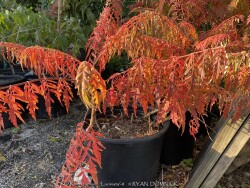

***Shrub descriptions available with future update!***Cutleaf Staghorn Sumac, is also known as Rhus typhina 'Lanciniata'


When Tiger Eyes® sumac (Rhus typhina 'Tiger Eyes') was released, it shocked the horticulture world with unseen beauty. It started as a random mutation from cutleaf staghorn sumac (Rhus typhina 'Laciniata') that was successfully propagated. Foliage emerges in spring as a lovely chartreuse color tinged with pink new growth and contrasting leaf petioles. Growth matures to a bright yellow golden color throughout the summer. By October, especially before and around Halloween, foliage turns bright orange with hints of red. Foliage quickly freezes and drops off for the year when temperatures reach 30 degrees F. The overall architectural shape of the shrub is attractive in winter often looking like a deciduous bonsai tree up to 6 feet tall. While the original species, staghorn sumac (R. typhina), is highly aggressive and considered invasive in the garden, the Tiger Eyes cultivar (lacking as much chlorophyll) is quite a bit less aggressive from rhizomes. Some spreading will occur each year and can be clipped off with no further efforts by the plant to spread until the following year. However if soil conditions are rich and moist, some spreading can still occur. This also makes the plant more susceptible to verticillium wilt so it's best to just avoid these kind of pampered garden conditions. We recommend planting Tiger Eyes sumac on berms, tops of retaining walls and/or non-irrigated gardens in poor/dry soils. Another good micro-climate is the hot South or West side of a house; heat and drought are never an issue with no foliage burn in our zone 6a garden of Eastern Kansas. During some years with excessive humidity and rainfall, foliage can become diseased and drop off before fall color can develop but this does not seem to hurt the plant. This problem is usually avoided if planting in good air circulation in full sun or on top of a berm. Another point of advice with Tiger Eyes sumac is to allow a few nearby shoots from the root system to grow and eventually replace the mother plant. Individual top growths will usually last about 5 to 7 years before declining and dying. A plant in our display gardens has survived 15 years using this previously described method. Nowadays, there are several different ornamental shrub choices for gold summer color and while tiger eyes sumac was one of the first, it is still a great choice. Rhus typhina 'Bailtiger' TIGER EYES® if offered for sale, are original (non-propagated) plants from Bailey Nurseries Inc.
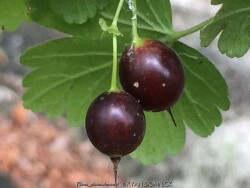

Missouri Gooseberry (Ribes missouriense) is a spreading shrub native to the north central United States including Kansas. It features green leaves that remain attractive all summer. Light yellow to whitish-green flowers are noticeable and attractive upon close inspection. Green semi-translucent berries develop in summer and ripen to a purplish-black color by late summer and early fall. Tart berries are attractive and highly edible when eaten fresh or baked into pies. Any fruits not eaten by humans are harvested by wildlife. Fall color is reddish-orange and will occur in sun or shade. This shrub eventually grows into a dense thicket 3-5' tall with small thorns or prickles. It will grow in part sun or full shade in medium to dry soils including dry-shade. In the landscape, it is commonly used as background planting on a hill or along a fence. It also makes a great barrier shrub naturally discouraging trespassers. Because of its tolerance for adverse conditions including poor soil and rock, it is often one of the last resort plants that will survive in certain areas especially in the worst of all dry-shade areas. It competes well under large shade trees and helps absorb leaf litter allowing it to break down and add nutrients back to the soil. Plants can also be planted on the Northside of a house, being extremely cold hardy with no winterkill. We do not recommend planting in small areas or in spaces that will overrun neighboring plants. It can spread by shallow horizontally growing roots but not very far. It will grow in moist rich soils but will spread quite a bit faster and grow taller. (and produce more fruit) You'll have to decide if that's desirable or not for your planting location. I have seen this plant growing exclusively in heavily shaded rocky outcroppings around Clinton lake near Lawrence Kansas with almost no other plants growing there except Coralberry(Symphoricarpos orbiculatus). Considered one of the best plants for solving your most difficult dry-shade landscape challenges.
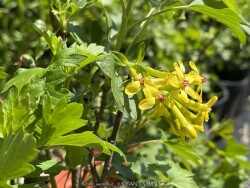



Still think yellow roses are tough to grow? Not this rebel! We evaluated yellow roses for years, looking for one that lived up to our demands for brilliant color and excellent disease-resistance. This is it! Sunny, canary yellow flowers do not fade to white, and really light up against the glossy green foliage. It is free-flowering, producing lots of buds which open to self-cleaning flowers. Superior disease-resistance makes it easy for gardeners to enjoy. Winner of an Award of Excellence from the American Rose Society. In Lawrence Kansas, performance has been impressive and low maintenance. Currently, no serious pest problems exist but we are careful not to recommend planting roses in large mass groupings in case a pest or disease like Rose Rosette Virus (RRV) becomes a problem. Mixed small plantings of roses and non-host plants may slow the spread of RRV in landscape plantings. As with most roses, thorns may be an issue with children or pets. Usually rose thorns are short and don't cause any serious injury: it creates more of a life lesson about respecting and being careful around the dangers in our world. All Proven Winners® plants are legally propagated, healthy and vigorous, true to name, and tagged with color pictures and growing information.


***Description for this perennial available with future update!***>>>>>All Proven Winners® plants are legally propagated, healthy and vigorous, true to name, and tagged with color pictures and growing information.
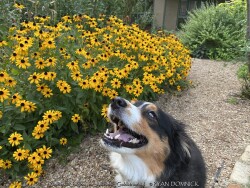

***Description for this perennial available with future update!***Fulgida Native Black-eyed Susan, is also known as Rudbeckia fulgida var. Fulgida
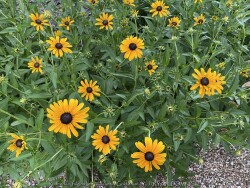

***Description for this plant available with future update!*** >>>> Good variety for customers with irrigation systems that water too much for other Black-eye Susan varieties.
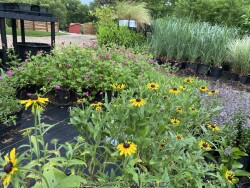

***Description for this perennial available with future update!***Native Black-eyed Susan, is also known as Rudbeckia hirta
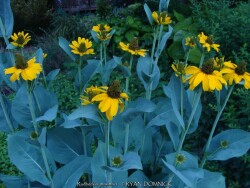

***Description for this perennial available with future update!***Great Coneflower / Blue-Leaf Coneflower, is also known as Rudbeckia maxima


***Description for this plant available with future update!***
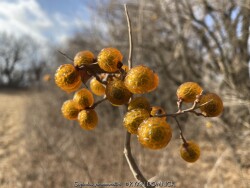

***Tree descriptions available with future update!***
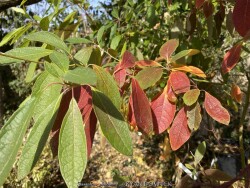

***Tree descriptions available with future update!***Sassafras Tree, is also known as Sassafras albidum


***Description for this perennial available with future update!***
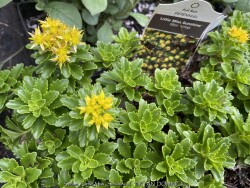

***Description for this perennial available with future update!***Little Miss Sunshine Sedum, is also known as Sedum 'Little Miss Sunshine'
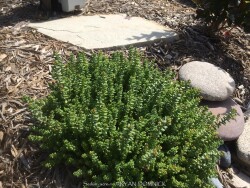

***Description for this perennial available with future update!***Mossy Stonecrop / Sedum, is also known as Sedum acre


***Description for this perennial available with future update!***Blue Corsican Sedum, is also known as Sedum dasyphyllum 'Major'
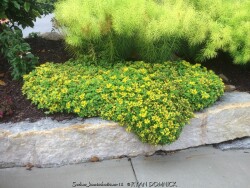

Kamtschaticum Sedum (Sedum kamtschaticum) is known for its compact mats of bright green foliage and yellow-gold flowers in the spring. Fall color turns a beautiful firey orange-red before going dormant. Kamtschaticum Sedum is native to northern China and along the Pacific coast of Siberia including the Kamchatka Peninsula with a similar climate of cold winters and hot summers. Bright green growth emerges early in the spring and spread slowly, rooting a little bit as it spreads but not aggressively. Growth is dense enough to resist most weeds. Kamtschaticum Sedum is useful as a small scale groundcover, rock garden plant, retaining wall plant, or even dry shade gardens. This tough sedum will grow in full sun to full shade in just about any soil except for wet poorly drained ones. Of all of the sedums, this is probably the most resistant to any kind of problems including root rot. I have witnessed clumps surviving and thriving for 20-30 years or more. There is really almost no maintenance with this sedum but you may choose to weed eat it in the winter for a more tidy appearance. The only slight problem is that when grown with too much water, The crown opens up as it flops over and looks slightly untidy. The flowering period is also pretty short. Considered one of the best plants for solving your most difficult dry-shade landscape challenges.
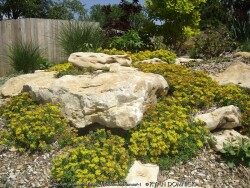

Kamtschaticum Sedum (Sedum kamtschaticum) is known for its compact mats of bright green foliage and yellow-gold flowers in the spring. Fall color turns a beautiful firey orange-red before going dormant. Kamtschaticum Sedum is native to northern China and along the Pacific coast of Siberia including the Kamchatka Peninsula with a similar climate of cold winters and hot summers. Bright green growth emerges early in the spring and spread slowly, rooting a little bit as it spreads but not aggressively. Growth is dense enough to resist most weeds. Kamtschaticum Sedum is useful as a small scale groundcover, rock garden plant, retaining wall plant, or even dry shade gardens. This tough sedum will grow in full sun to full shade in just about any soil except for wet poorly drained ones. Of all of the sedums, this is probably the most resistant to any kind of problems including root rot. I have witnessed clumps surviving and thriving for 20-30 years or more. There is really almost no maintenance with this sedum but you may choose to weed eat it in the winter for a more tidy appearance. The only slight problem is that when grown with too much water, The crown opens up as it flops over and looks slightly untidy. The flowering period is also pretty short. Considered one of the best plants for solving your most difficult dry-shade landscape challenges. Tooth-Leaf Kamtschaticum Sedum (Sedum kamtschaticum var. middendorffianum) is a shorter more drought tolerant variety with tooth-like jagged edges. The clump does not open up and flop. This variety is also more tolerant of full hot sun and shallow soils also making it an ideal roof-garden plant.
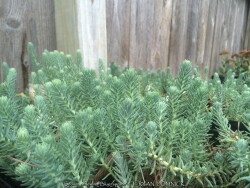

***Description for this perennial available with future update!***Blue Spruce Sedum, is also known as Sedum reflexum
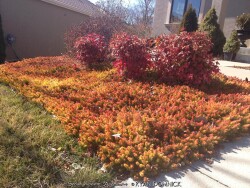

***Description for this perennial available with future update!***Angelina Gold & Orange Sedum, is also known as Sedum rupestre 'Angelina'
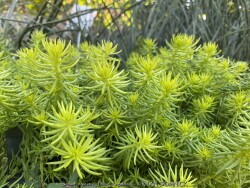

***Description for this perennial available with future update!*** NEEDS EDIT>>>>>> Sedum Prima Angelina has a denser, more compact habit and more vivid golden color than Angelina. According to Plant Delights nursery, "Sedum rupestre 'Prima Angelina' is a superb new improvement of the wildly popular, Sedum 'Angelina'. This compact, better-branched, brighter colored sport was discovered by Ohio's Jared Hughes. Sedum 'Prima Angelina' has thrived in our hot, humid summers. We particularly like that this new gem remains bright gold in cold weather, where its' parent takes on an orange cast in winter. So far, no flowers have been observed on the sport."
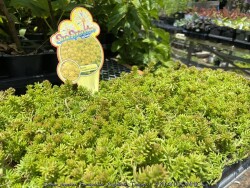

***Description for this perennial available with future update!***Sunsparkler Angelina's Teacup Gold & Orange Sedum, is also known as Sedum rupestre 'Sunsparkler Angelina's Teacup'
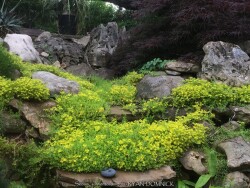

***Description for this perennial available with future update!***>>>>>This plant can also be in a water garden stream as long as the water is constantly moving: stagnant water is not tolerated. Considered one of the best plants for solving your most difficult dry-shade landscape challenges.


Kamtschaticum Sedum (Sedum kamtschaticum) is known for its compact mats of bright green foliage and yellow-gold flowers in the spring. Fall color turns a beautiful firey orange-red before going dormant. Kamtschaticum Sedum is native to northern China and along the Pacific coast of Siberia including the Kamchatka Peninsula with a similar climate of cold winters and hot summers. Bright green growth emerges early in the spring and spread slowly, rooting a little bit as it spreads but not aggressively. Growth is dense enough to resist most weeds. Kamtschaticum Sedum is useful as a small scale groundcover, rock garden plant, retaining wall plant, or even dry shade gardens. This tough sedum will grow in full sun to full shade in just about any soil except for wet poorly drained ones. Of all of the sedums, this is probably the most resistant to any kind of problems including root rot. I have witnessed clumps surviving and thriving for 20-30 years or more. There is really almost no maintenance with this sedum but you may choose to weed eat it in the winter for a more tidy appearance. The only slight problem is that when grown with too much water, The crown opens up as it flops over and looks slightly untidy. The flowering period is also pretty short. Considered one of the best plants for solving your most difficult dry-shade landscape challenges. Big-Leaf Kamtschaticum Sedum (Sedum takesimensis / kamtschaticum) is taller with larger leaves and larger flowers, about double that of the species.
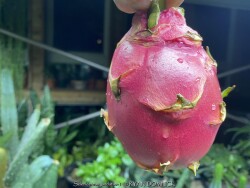

Dragon Fruit cacti are grown for delicious nutritious fruits. This tropical jungle cactus has a few requirements in order to thrive but nothing too hard. Give them bright indirect light and water only when dry. They are usually grown as a house plant in Kansas but can be moved outside if kept in part shade to shade. Leaves can sunburn but morning or filtered sun is ok! Dragon Fruit, like all true cacti, originates in the Americas. It is a sprawling or vining, terrestrial or epiphytic cactus. They climb trees and walls by use of aerial roots and can reach a height of 30 feet in the wild. Protect from temperatures below 45 degrees F and move into a bright window over the winter with no watering. As a winter house plant, it will look presentable all winter long with just a few waterings. Repotting may or may not be needed depending on how large you want the plant to grow; plants can continue to grow in the same pot for years. If repotting, make sure to use a sharp draining highly organic cactus mix with plenty of sand and perlite. This is relatively uncommon plant never seen at the big box stores and will command a higher price than most other houseplants. Plants are usually grown in hanging baskets and take up alot of space. Fruit may or may not occur in this climate; I have seen flowering but not fruit.
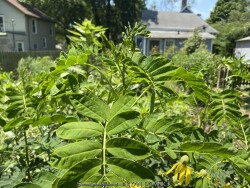

***Description for this perennial available with future update!***
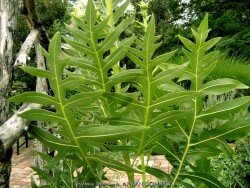

***Description for this perennial available with future update!***>>>>>Silphiums (Silphium laciniatum) are very long-lived perennials considered a "Once it's there, it's there forever" plant!
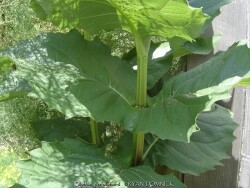

***Description for this perennial available with future update!***>>>>>Silphium perfoliatum (Silphium perfoliatum) >>>>>>>>is also grown as a large bog plant needing constantly moist soil rich in organic matter. As a rain garden plant, it will thrive is a depressed area in the landscape that collects rain water from a roof during spring and summer periods of rain but then >>>>>might go partially dormant if the water hole dries out completely. Considered a "Once it's there, it's there forever" plant!
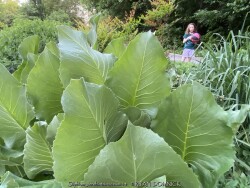

***Description for this perennial available with future update!***>>>>>Considered a "Once it's there, it's there forever" plant!


Bluestem Goldenrod (Solidago caesia) is a perennial wildflower with arching blue-green stems is native to the eastern and central parts of the United States and Canada. This woodland goldenrod occurs in open upland woods, shaded bluffs, slopes of wooded ravines and rocky cliffs. Yellow late-summer flowers contrast nicely with bluish purple stems. Considered one of the best plants for solving your most difficult dry-shade landscape challenges and still providing flowers if given at least a couple hours of sun or all-day dappled sun through the trees. Goldenrods are not wind-pollinated and therefore do not cause standard hay fever or allergies. This goldenrod attracts native bees, wasps and pollinating flies. Rabbit and deer resistance is good. This goldenrod has been planted in our trial gardens over 15 years ago on a dry-shade berm with 2-3 hrs of morning sun. The slowly expanding clump is virtually maintenance free, only needing trimmed in fate fall. This species does not spread by rhizomes or runners like some other goldenrods but will self-seed prolifically if you do not mulch. Bluestem Goldenrod is not well known or available in garden centers but worthy of wider scale landscape use.
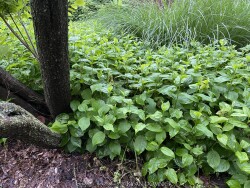

Zig Zag Goldenrod (Solidago flexicaulis) is native to the eastern and central parts of the United States and Canada. This woodland goldenrod, with erect, somewhat zig-zag stems, bears small flower heads at each node along the stem and upper leaves. The oval leaves are a rich green, pointed, and coarsely toothed. Considered one of the best plants for solving your most difficult dry-shade landscape challenges and still providing flowers. Goldenrods are not wind-pollinated and therefore do not cause standard hay fever or allergies. This goldenrod attracts butterflies. Rabbit and deer resistance is good. Zig Zag Goldenrod has been planted in our trial gardens over 10 years ago on a hill in part-sun to dry shade. The slowly expanding clump is virtually maintenance free, only needing trimmed in fate fall. Zig Zag Goldenrod is not well known or available in garden centers but worthy of wider scale landscape use.
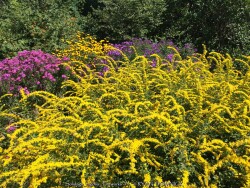

Fireworks Goldenrod (Solidago rugosa 'Fireworks') is the most garden-worthy of the goldenrods! It features dark green upright foliage. As the flower panicle matures, the expanding buds create a fine-textures cloud-like effect for about a month before the flowers open. When the flowers finally open in September, the radiating form really looks like fireworks! After flowering, the dried flower structure holds up well into fall offering winter interest until the first wet heavy snow. The species, Solidago rugosa, is native to the eastern and central parts of the United States and Canada. It is a highly adaptable goldenrod occuring in open moist areas such as low woods, meadows, old fields, pine barrens, and bogs. It is more tolerant of wet soils that other goldenrod. It prefers locations in full sun in average to moist soils that are well-drained but is adaptable to part shade or dappled shade. In Eastern Kansas, typically our 40 inches of rainfall is sufficient without extra water if planted in good soils. During the drought years in Eastern Kansas of 2011 and 2012, many Fireworks Goldenrods planted in landscapes that were not watered survived but dried up as flowers were trying to form. Goldenrods are not wind-pollinated and therefore do not cause standard hay fever or allergies. This goldenrod attracts wide variety of insects, including small bees, wasps, flies, small butterflies. Rabbit and deer resistance is good. The slowly expanding clump is virtually maintenance free, only needing trimmed in fate fall. Fireworks Goldenrod is generally very pest and disease resistant and can spread by creeping rhizomes or seed. Fireworks Goldenrod has been planted in our trial gardens over 18 years in mostly full sun with average garden soil. This is among our favorite perennials with truely 4 seasons of interest!
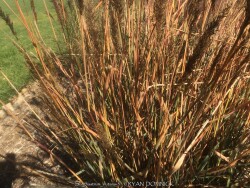

Indian Grass (Sorghastrum nutans) is easily grown in average, dry to medium, well-drained soils in full sun. It is tolerant of a wide range of soils and growing conditions but tends to flop in rich moist soils. This ornamantal grass is a tall, Kansas native, perennial, warm season grass that dominates much of the tall grass prairie extending into the Flint Hills. In fact, Indiangrass, Big bluestem, Little bluestem, and Switchgrass comprise 75% of the species in this ecosystem. It may be grown as an ornamental grass because of its attractive foliage which changes color seasonally along with its good architectural height and its interesting yellow flower/seed heads. Indian Steel Indian Grass (Sorghastrum nutans 'Indian Steel') has improved bluish green foliage that turns yellow in fall and retain some gold color throughout the winter. Feathery panicles of tan-yellow flowers appear well above the foliage in late summer to early fall adding winter interest


***Description for this perennial available with future update!***Spigelia / Indian Pink, is also known as Spigelia marilandica
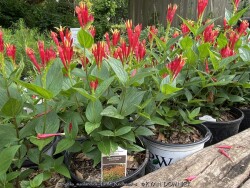

***Description for this perennial available with future update!***Little Red Head Spigelia / Indian Pink, is also known as Spigelia marilandica 'Little Red Head'


***Description for this perennial available with future update!***Ragin Cajun' Spigelia / Indian Pink, is also known as Spigelia marilandica 'Ragin Cajun'
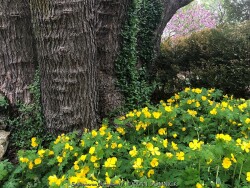

***Description for this perennial available with future update!***>>>>>For the home garden, the species is generally too aggressive to mix with other plants
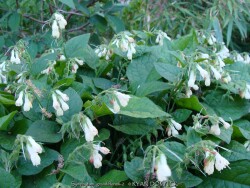

Dry Shade Comfrey / Large-Flowered Comfrey (Symphytum grandiflorum) is a perennial native to Europe with textured sandpapery green leaves and light yellow flowers. It spreads by creeping rhizomes and forms an attractive groundcover. Foliage is quite dense forming a tight weed resistant covering. Comfrey prefers rich average to moist well-drained soils with part sun to full shade. However, being a tolerant plant, is very adaptable to both dry and moist locations and will grow quite nicely in dry shade. It is not particular as to soil type or pH. and is highly tolerant of urban pollution and will even thrive in inner city environments. There is virtually no maintenance unless you want to mow down the dead foliage in the winter. It is also suggested to deadhead the flowers after blooming as they are not attractive. But if you don't, they will die back on their own and get swallowed up by the foliage. In addition to being a great perennial for your landscape, this comfrey may have herbal uses as well. There are no pest, disease, or browser problems. Considered one of the best plants for solving your most difficult dry-shade landscape challenges. The blue variety, Symphytum grandiflorum 'Hidcote Blue', has more of a blue green foliage and light blue flowers on taller flower spikes. Spread is also more rapid and sometimes to the point of aggressive and rich moist soil. Comfrey is a great underused plant worthy of more wide scale use in the landscape. Dry Shade Comfrey has persisted through over a decade in our Lawrence, KS display garden with no problems.
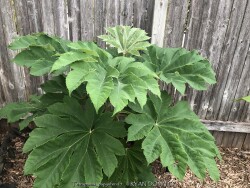

Rice Paper Plant (Tetrapanax papyrifer) is a hardy tropical with large palmate leaves up to 24" across. In warmer zones and in its native habitat in Taiwan, Tetrapanax is a large shrub or small tree with white flowers produced in the fall. However in our Lawrence Kansas zone 6a climate, Tetrapanax is killed down to the ground each year like crapemyrtles and butterfly bush. A thick mulch is appreciated when young but not needed on established plantings. Tetrapanax is not picky about soils or moisture but will display fastest growth in rich, moist, well-drained areas in full sun. Tetrapanax will also tolerate almost full shade when established. Because it spreads by rhizomes, be sure to allow plenty of space or have control methods in place. Generally, chopping off shoots as they emerge as easy enough. Another word of caution is that Tetrapanax contains a white powdery-like cottony substance on near stems and back sides of leaves. This can cause eye and throat irritation so be careful when cutting back to not rub off the dust (or do so up-wind). Tetrapanax is a very rare plant in cultivation but can also be seen at the Wichita botanical gardens, Botanica. There is a giant form called Tetrapanax papyrifer 'Steroidal Giant' available at Plant Delights Nursery in North Carolina with leaves up to 3 feet wide and less spreading but we have not been able to procure or establish this plant in our Lawrence, KS garden. In our trial gardens in Lawrence, KS (zone 6a), three established mulched specimens of Tetrapanax papyrifer have survived for over 10 years including -17 degrees F in 2021. During that arctic blast of February, 2021, lows down to -17 degrees F on Feb 16th, 2021 were recorded. The longevity of this cold blast was also impressive: 10 days on a row with highs of 10-15 degrees F or lower, 8 nights of lows in the single digits and negatives, and 36 straight hours of 0 degrees F and mostly lower. It can also be grown as a potted patio plant; move into a cold garage or basement over the winter with minimal watering. Allow to go dormant as needed with little care, just cut off dead foliage and place back out in April or May with a time-release fertilizer.
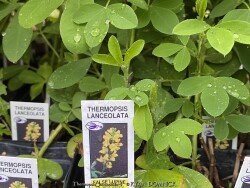

Yellow False Lupine / Lanceleaf Thermopsis, is also known as Thermopsis lanceolata. This plant has beautiful green narrow leaves and black stems on new emerging plants before flowering. Thermopsis lanceolata, the tapered false lupin, is a species of flowering plant in the legume family Fabaceae, native to Russia, Kazakhstan, Mongolia, Nepal and China.
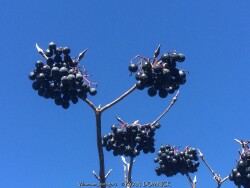

***Tree descriptions available with future update!***
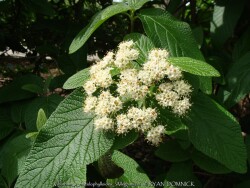

Leatherleaf viburnum is a large semi-evergreen shrub with leathery leaves and cream white flowers. Foliage emerges light green with powdery white material on the backside of the leaf. Foliage darkens to a medium green by summer and finally turning to a purplish winter color. About half of the foliage drops in the winter but is still effective enough for a partial screening. Flowers bloom mostly in spring but sporadically throughout the year. If pollination occurs, red fruits follow in the late summer thru fall creating quite a show. More than one variety is typically required for pollination. Leatherleaf viburnum prefers medium to rich garden soil in full to part sun. Being one of the toughest viburnums around, it can handle much less than ideal conditions including dry shade. Typically our are 40 inches of rainfall per year in eastern Kansas is enough without extra water. However, during times of drought, the foliage will wilt and growth will stop. Luckily the foliage is able to survive in a wilted state for a long time (usually up to two or three weeks) before actually dying. This gives you plenty of notice that it needs water. There is virtually no maintenance except rejuvenation on very old plants. Yearly fertilizer application is appreciated. When given plenty of room to grow, Leatherleaf Viburnum can reach up to 8 or 12 feet tall and wide after 20-30 years. Eventually old canes become unproductive and should be removed allowing young vigorous canes to develop. Leatherleaf viburnum grows slow at first especially in rough soils but the key thing is that it will survive and grow faster when established. Cold hardiness is not a problem in Lawrence Kansas zone 6a but in colder climates expect winterkill down to the ground in some years. Considered one of the best plants for solving your most difficult dry-shade landscape challenges. Several improved cultivars exist. Alleghany Leatherleaf Viburnum (Viburnum x rhytidophylloides 'Alleghany') has improved cold hardiness and growth form.


Leatherleaf viburnum is a large semi-evergreen shrub with leathery leaves and cream white flowers. Foliage emerges light green with powdery white material on the backside of the leaf. Foliage darkens to a medium green by summer and finally turning to a purplish winter color. About half of the foliage drops in the winter but is still effective enough for a partial screening. Flowers bloom mostly in spring but sporadically throughout the year. If pollination occurs, red fruits follow in the late summer thru fall creating quite a show. More than one variety is typically required for pollination. Leatherleaf viburnum prefers medium to rich garden soil in full to part sun. Being one of the toughest viburnums around, it can handle much less than ideal conditions including dry shade. Typically our are 40 inches of rainfall per year in eastern Kansas is enough without extra water. However, during times of drought, the foliage will wilt and growth will stop. Luckily the foliage is able to survive in a wilted state for a long time (usually up to two or three weeks) before actually dying. This gives you plenty of notice that it needs water. There is virtually no maintenance except rejuvenation on very old plants. Yearly fertilizer application is appreciated. When given plenty of room to grow, Leatherleaf Viburnum can reach up to 8 or 12 feet tall and wide after 20-30 years. Eventually old canes become unproductive and should be removed allowing young vigorous canes to develop. Leatherleaf viburnum grows slow at first especially in rough soils but the key thing is that it will survive and grow faster when established. Cold hardiness is not a problem in Lawrence Kansas zone 6a but in colder climates expect winterkill down to the ground in some years. Considered one of the best plants for solving your most difficult dry-shade landscape challenges. Several improved cultivars exist. Darts Duke Leatherleaf Viburnum (Viburnum x rhytidophylloides 'Dart's Duke') features larger dark green foliage, larger flowers, better density, and pink cottony flock on the back of new leaves and new stems instead of white. All Proven Winners® plants are legally propagated, healthy and vigorous, true to name, and tagged with color pictures and growing information.
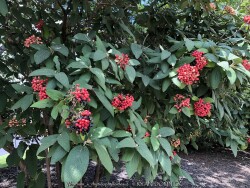

Leatherleaf viburnum is a large semi-evergreen shrub with leathery leaves and cream white flowers. Foliage emerges light green with powdery white material on the backside of the leaf. Foliage darkens to a medium green by summer and finally turning to a purplish winter color. About half of the foliage drops in the winter but is still effective enough for a partial screening. Flowers bloom mostly in spring but sporadically throughout the year. If pollination occurs, red fruits follow in the late summer thru fall creating quite a show. More than one variety is typically required for pollination. Leatherleaf viburnum prefers medium to rich garden soil in full to part sun. Being one of the toughest viburnums around, it can handle much less than ideal conditions including dry shade. Typically our are 40 inches of rainfall per year in eastern Kansas is enough without extra water. However, during times of drought, the foliage will wilt and growth will stop. Luckily the foliage is able to survive in a wilted state for a long time (usually up to two or three weeks) before actually dying. This gives you plenty of notice that it needs water. There is virtually no maintenance except rejuvenation on very old plants. Yearly fertilizer application is appreciated. When given plenty of room to grow, Leatherleaf Viburnum can reach up to 8 or 12 feet tall and wide after 20-30 years. Eventually old canes become unproductive and should be removed allowing young vigorous canes to develop. Leatherleaf viburnum grows slow at first especially in rough soils but the key thing is that it will survive and grow faster when established. Cold hardiness is not a problem in Lawrence Kansas zone 6a but in colder climates expect winterkill down to the ground in some years. Considered one of the best plants for solving your most difficult dry-shade landscape challenges. Several improved cultivars exist. Red Balloon Leatherleaf Viburnum (Viburnum x rhytidophylloides 'Red Balloon') features significant improvements. In spring, large, lacy white flower clusters cover the plant, followed by green fruit which turns brilliant red in late summer. The thick, leathery foliage lends a distinguished, handsome look to the plant all season. This viburnum will develop some berries without another variety as a pollinator, but you'll get more fruit if planted around 'Mohican' or 'Alleghany.' Proven Winners® plants are legally propagated, healthy and vigorous, true to name, and tagged with color pictures and growing information.
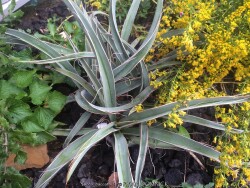

Bluish-green curved leaves from this yucca (Yucca baccata) make an excellent architectural statement. Used as a patio plant in Kansas, place in full sun with no extra watering except from rainfall. Repotting may or may not be needed depending on how large you want the plant to grow. Potted plants are hardy to at least -5 to -15 degrees F if kept dry so you can wait awhile to move these in for the winter. Then move into a cold garage, basement, or bright window over the winter with NO watering. You may also leave this plant outside if under a dry overhang all winter and freeze solid if desired. A suggestion to make this plant a lot more safe around your eyeballs is to clip the new spines off as the new leaves slowly unfurl. It is suggested to buy a large plant to start with as growth is slow. I have never seen this species flower in Kansas, but if it does, the young flower stalks can be cooked and eaten, with the tough outer rind discarded. The fruit can be also be eaten raw or cooked. Yucca baccata occurs in a large area of the North American deserts and exhibits much variation across its range. Yucca baccata specimens we sell are from the higher, mountainous regions of the Rocky Mountains with increased winter hardiness. Having desert heritage, it resents poor drainage and winter moisture. To counteract that in Kansas, plant in full sun on berm or south-facing wall with poor sandy or rocky soil with no irrigation. A large 2-3' wide specimen has flourished in our display garden in Lawrence, KS for over 15 years. It is planted partially under a south facing roof overhang and has survived -16 degrees F and a week of single digit highs in February, 2021. Amazing that a yucca native to areas receiving 4-5" of rain per year can grow in a climate receiving 10 times more rain! ADDITIONAL INFORMATION ABOUT CREVICE GARDENING: In nature, some of the most interesting xeric plants grow in tough places such as inhospitable rock outcroppings with almost no soil. We can recreate that specific and exclusive growing environment with a crevice garden. Crevice gardening allows you to grow cold-hardy cacti and succulents that are normally cold hardy to our climate (Lawrence, KS zone 6a) but not normally tolerant of excessive moisture (40"/year), especially in the winter. This technique provides optimal xeriscape growing conditions by limiting the amount of soil and water around the roots and reducing the potential of root rot. Start with a raised mound of fast draining soil mix consisting mostly of decomposed granite, coarse sand, gravel, and a small amount of organic matter. Incorporate vertical rock formations such as flagstone into a raised landscape bed creating narrow 1-2" wide crevices filled with the soil mix. This helps quickly channel rain and snow melt water down more deeply into the soil encouraging deeper root growth while keeping the soil dry around the base of the plant. It is important that the entire mound is well above grade level to avoid drainage problems; crevice gardens typically range from 12"-36" tall. After installing the plants, mulch with a thin layer of pea-gravel or decomposed granite. In our Lawrence Kansas zone 6a winters with occasional polar vortexes or arctic blasts, this technique works well in any hot microclimate such as a south facing side of a berm or under a south or west facing roof overhand of a house or building. Kansas Plant Farm LLC built a trial crevice garden in 2022 and we have now had enough time to evaluate the plants after a true winter cold spell. During the arctic blast of January 2024, low nighttime temperatures got down to -11 degrees F (Jan 10th,2024). The longevity of this cold blast was also impressive: 4 days on a row with single digit highs including 1 day with a daytime negative high(-2F), 4 nights of lows in negatives (-8For lower), and 48 straight hours of 0 degrees F and mostly lower. A light snow cover helped insulate the ground but wind blew off most powdery snow on the foliage exposing the top parts of the plants to some extreme temperatures with surprisingly little damage. In our crevice trial gardens in Lawrence, KS (zone 6a), this variety survived so far.
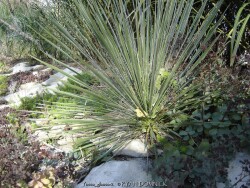

Pale green sword-like leaves from this yucca (Yucca glauca) make an excellent architectural statement with needle-like evergreen foliage. Over time, this yucca will form colonies of evergreen rosettes in its native habitat. Yucca glauca is the most cold-hardy yucca occuring in a large area of the North American great plains and short-grass prairies. The native habitat ranges from Texas to Canada and covers central Kansas predominantly in areas receiving 10-20" of rain per year. Having desert heritage, it resents poor drainage and winter moisture but will usually tolerate normal Eastern Kansas rainfall if planted in full sun on berm or south-facing wall with no extra irrigation. Use is primarily reserved for cactus or xeriscape gardens needing the fine needle-like texture of evergreen foliage and/or where Adam's needle yucca foliage might be too wide. Avoid placing near trees as fall clean-up of leaves can be a problem. Avoid use where children or pets play; needles are sharp and unforgiving! A large 2-3' wide specimen has flourished in our display garden in Lawrence, KS for over 15 years and flowered many times. Flowers are quite attractive and full of medicinal and edible uses for those inclined to learn more. Amazing that a yucca native to areas receiving as little as 10" of rain per year can grow in a climate receiving 40" of rain!
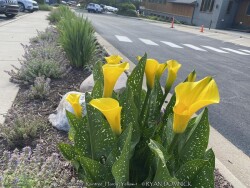

***Description for this hardy tropical available with future update!***>>>>>are typically grown for their mid-summer flowers and vertical iris-leaf foliage. The plants are temperate and subtropical herbaceous perennial bulbs native to areas with a summer wet season and dry winter. Gladiolus are hardy outside as a perennial when established and with minimal effort at least up to zone 6a. During the growing season, fertilize, water regularly, and plant in full sun. Plant these bulbs in the ground at least 6-8" deep with 3-4" of mulch to enjoy a wonderful tropical flowering effect! Foliage may look bedwraggled by fall so it is ok to cut back foliage at that time. They can also be grown as a flowering summer patio plant. If growing as a potted plant and trying to overwinter, allowing the foliage to frost is ok, it will not kill the root system. However, do not allow the pot with rootball to freeze solid or go below 20 degrees for more than a few hours; move into a cold garage or basement over the winter with no watering. Cut back and allow to go dormant and place entire pot back out in April or May with a time-release fertilizer. Another more labor intensive way to overwinter gladiolus is to remove them from the dirt, dust with fungicide, place in box with sawdust, and keep in the refrigerator. We consider this method old-fashioned and too much work but ok if you only want to save a few bulbs. If digging from the ground in colder zones, just save a big chunk with the dirt intact and place into a large pot in the garage. In a customer's garden in Lawrence, KS (zone 6a), four established specimens planted over 4-6" deep and mulched 2-3" with wood mulch survived -17 degrees F. During the arctic blast of February, 2021, lows down to -17 degrees F on Feb 16th, 2021 were recorded. The longevity of this cold blast was also impressive: 10 days on a row with highs of 10-15 degrees F or lower, 8 nights of lows in the single digits and negatives, and 36 straight hours of 0 degrees F and mostly lower.